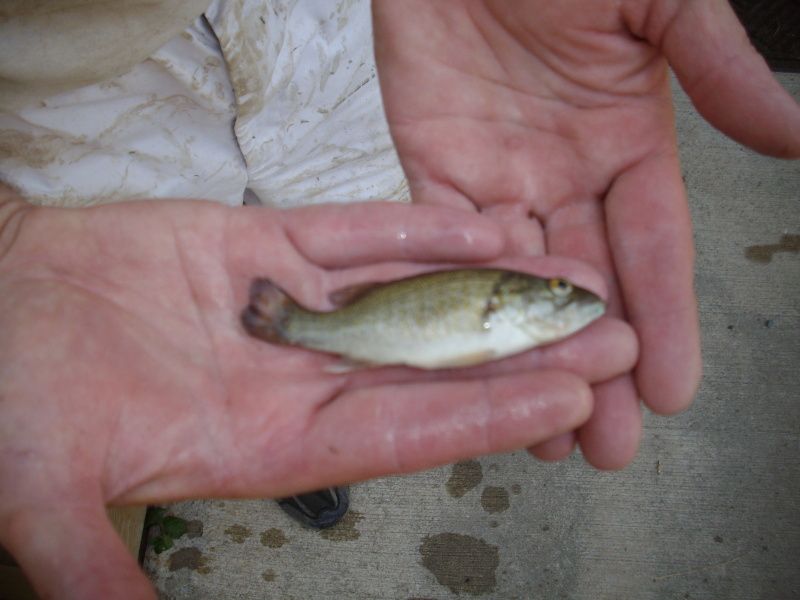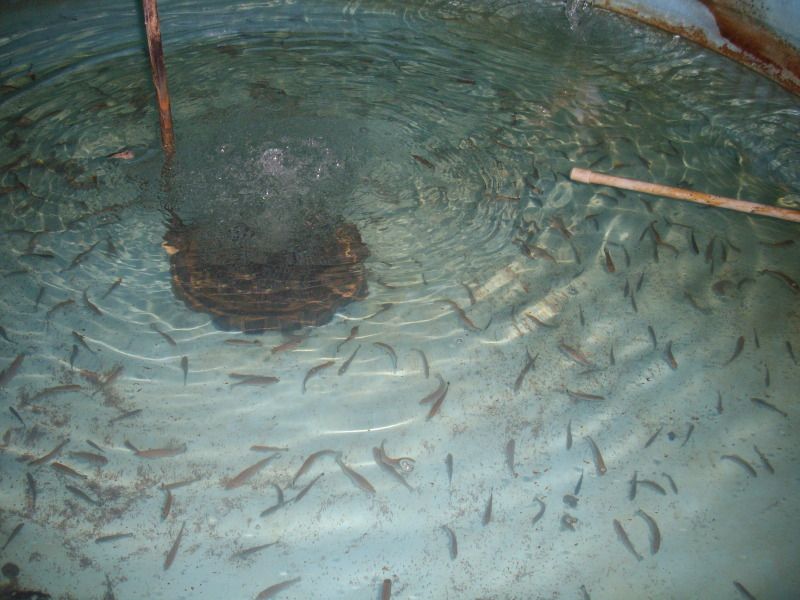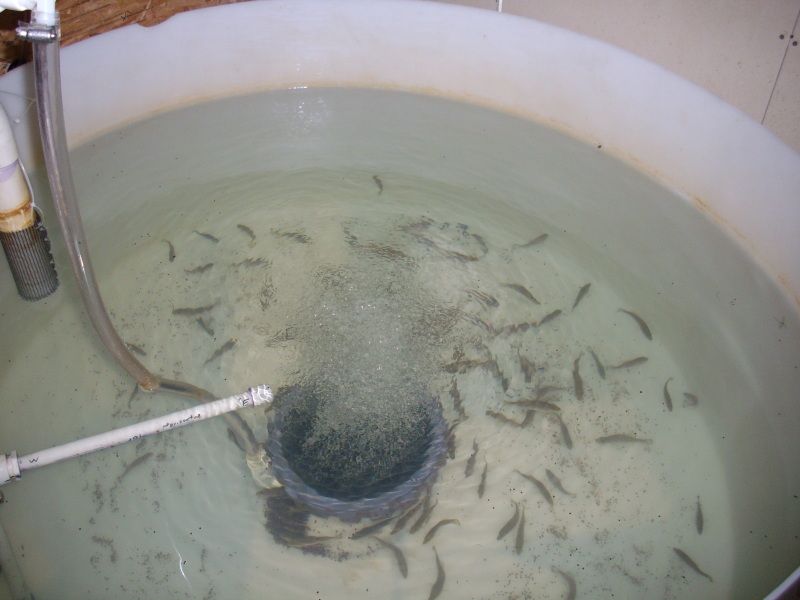I caught via hook and line and placed about 13 broodfish smallmouth (originally bought as fingerlings) from my main .62 acre pond into one of my small 1/10th acre ponds -- complete with gravel and rubble nests -- in hopes they would do their thing. I inquired here previously if anyone had any idea from close up pics of of the urogenital openings, which were male and female. Apparently these fish were not old enough yet to show definite signs of being egg laden in the females. Thank you for your responses.
After a definite hatch in late May (black swim up fry) I removed the broodifsh via hook and line and put them back in their original pond. Just this last week I repeatedly seined the pond and drained to recover what I missed.
Anyway, I came up with 754 fingerlings with two morts in the last week and so far no moribund fish.
I needed to remove them ASAP to get them inside for feed training as the larger they are the more difficult it is to feed train them. They are also easier and more economical to maintain and grow at a uniform rate inside on commercial feed. So far everything seems to be going well, no small feat considering I moved these fish in water temps in the upper 80's! I credit salt to saving my butt, as little handling as possible, and plenty of air.
About 100 or so are 3 to 4 1/2 inches and the rest are 1.5 to 2.0 inches. I have them separated in two tanks to prevent cannibalism. My guess is the larger ones are cannibals or took to fathead minnow and stickleback offspring that multiplied in the pond. This is after I planted what I thought were all fatheads for feed for the broodfish. I also screwed up by pumping in green water from my adjacent perch production pond, and apparently introduced yellow perch larvae which were ahead in development, and probably did some munching on the smb fry. I harvested a couple hundred rotund yellow perch up to about 4 inches, and there were hundreds of sticklebacks.
Here's a smallie about 3 1/2 inches:

Here's a smaller one about 1.5 inches:

Sorry about the blurry pics but my 76 year old dad that helped me seine and sort took them took them. Bless his heart I think the heat was getting to him! (Air temps were in the upper 90's when we seined!
Here's the larger inside RAS tank with the more numerous smaller fish:

And a smaller tank for the larger less numerous fish:

You may think there are aren't as many fish as pictured, but they have a tendency to hide under the front lip of the tank when you approach. That, and to me, when you have numerous fish in a tank there always seems to be less than there is.
I would have preferred a flow through tank at pond side to feed train these fish but the water is so un
Godly warm this year that worried me. I also can't use salt in a flow through tank.
The downside to not using a flow through tank is the mess these numerous small fish make. I've had to in the early days do some partial water changes twice a day!
Next year I hope to expand this to two or three ponds and will either carefully sort out the sticklebacks (most numerous in the pond) before adding the fatheads or only feed pellets to the feed trained brood fish. For some reason they went off the pellets when I added them to the pond and I was concerned that needed to eat.
I'm selling these wholesale and they are quite lucrative considering there are only five producers in the entire country.
Edited by az9, 22 July 2012 - 03:59 PM.







